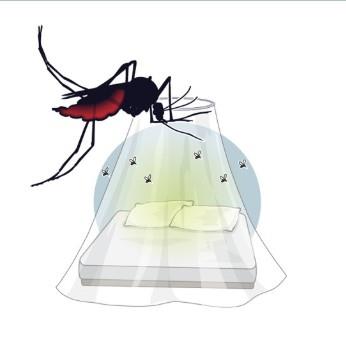
Over 34.9 Mn Globally At Risk Of Chikungunya Every Year, South Asia Tops: Study
Chikungunya virus is an arbovirus transmitted by Aedes mosquitoes and causes epidemics in tropical regions with potential risk in higher latitudes.
The study, conducted by researchers from the London School of Hygiene & Tropical Medicine (LSHTM), UK, Nagasaki University in Japan, and the International Vaccine Institute in Seoul, South Korea, showed that the burden was primarily attributed to chronic disability, with significant burden among both the youngest (less than 10 years old) and the elderly (over 60 years old).
Based on existing evidence of chikungunya transmission, the infectious disease model predicted 14.4 million people could be at risk of infections globally each year, with 5.1 million people at risk in India.
Likely, chikungunya cases could also spread to regions not currently recording infections or considered at-risk, the analysis found, potentially increasing the number of people at risk each year to 34.9 million globally, with 12.1 million in India, revealed the findings, published in BMJ Global Health.
"It's been widely thought that mosquitoes carrying chikungunya would be confined to subtropical or tropical continents, but our analysis has found that the risk extends way beyond these regions,” said Hyolim Kang, who led the study as part of her Ph.D. at the LSHTM.
The team used a random forest model to predict force of infection and estimate chikungunya burden at high spatial resolution (5×5 km) using covariates from climatic, socioeconomic, and ecological domains.
Further, they used a focal scenario to estimate the observed burden (lower bound) and an at-risk scenario to estimate the potential burden (upper bound) of chikungunya transmission.
In the focal scenario, the estimated disability-adjusted life years (DALYs) were 0.96 million annually at the global level. India and Brazil accounted for 48 per cent of the global burden, with 0.33 million DALYs from India and 0.11 million DALYs from Brazil.
South Asia had the largest regional share (44 per cent), followed by Latin America and the Caribbean (26 per cent), East Asia and the Pacific (20.5 per cent), and Sub-Saharan Africa (6.9 per cent).
In the at-risk scenario, the study estimated 2.3 million DALYs annually at the global level, with India, Pakistan, Indonesia, and Brazil accounting for 51 per cent of the global burden.
"Prevention of the spread of this disease is important for everyone. There are no specific antiviral therapies for chikungunya, and treatment relies solely on supportive care. Not only are infections extremely painful, even the healthiest of people can be infected and left with life-long disability," Kang said.

Legal Disclaimer:
MENAFN provides the
information “as is” without warranty of any kind. We do not accept
any responsibility or liability for the accuracy, content, images,
videos, licenses, completeness, legality, or reliability of the information
contained in this article. If you have any complaints or copyright
issues related to this article, kindly contact the provider above.
Most popular stories
Market Research

- Financewire And Tipranks Partner To Redefine Financial News Distribution
- Ethereum-Based Defi Crypto Mutuum Finance (MUTM) Reaches 50% Completion In Phase 6
- Stonehaven Circle Marks 13Th Anniversary With Hadrian Colwyn Leading Calvio Ailegacyx Innovation
- Citadel Launches Suiball, The First Sui-Native Hardware Wallet
- Motif AI Enters Phase Two Of Its Growth Cycle
- Dubai At The Centre Of Global Finance: Forex Expo 2025 Redefines The Trading Landscape




















Comments
No comment